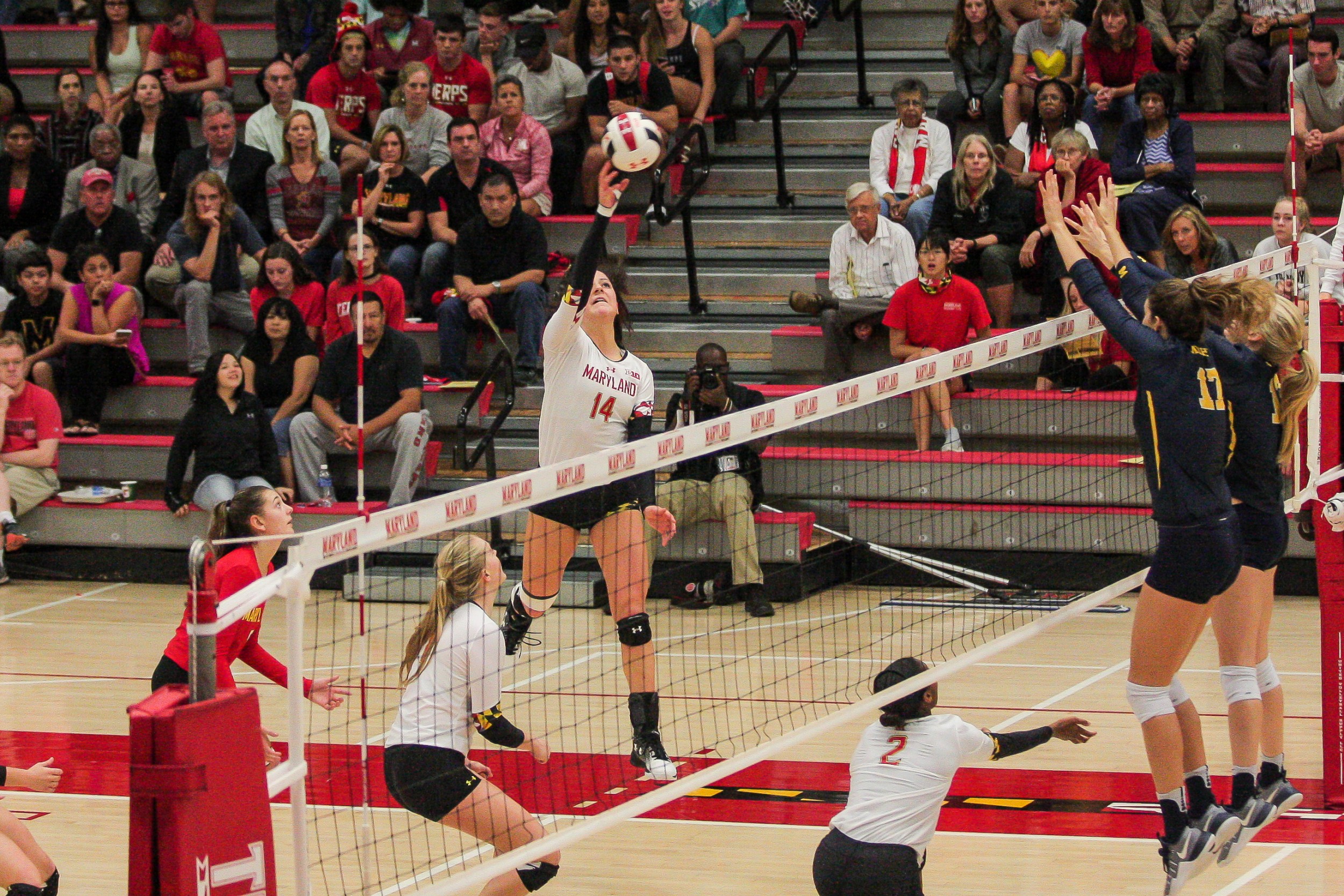Maryland volleyball coach Steve Aird has preached to his players to learn from their mistakes throughout this season. While the younger players have struggled at times, he said he’s more concerned with their long-term development than wins and losses.
Outside hitter Gia Milana said each day in practice he tells his squad it’s important to get one percent better.
So even though the Terps stumbled to their 10th Big Ten loss in a straight set defeat to Ohio State on Friday night, Aird said his squad has made important strides since finishing nonconference competition Sept. 16.
“We’re a lot better now,” Aird said. “But the biggest difference is we’re playing against top teams all the time.”
Right now, the Big Ten features eight top-25 programs, more than any other conference in the country.
Maryland has played 12 matches against ranked teams so far this season and is 1-11 in those contests. Against unranked opponents, the squad is 9-3.
Even so, the Terps have made adjustments that are starting to pay dividends. After beginning their conference slate 0-9, they have won two of three matches.
Freshman outside hitter Megan McTigue, who has been playing a serve specialist for much of the season, is an example of the team’s progression. Until an Oct. 19 clash with then-No. 16 Michigan, she averaged just 0.16 aces per set. In three matches since then, she has recorded 0.4 aces per set.
In addition, McTigue took advantage of a rare opportunity to make a front-row impact against the Wolverines. With outside hitter Liz Twilley unavailable due to injury, she notched a career-best five kills.
Twilley missed just one match, and was in the starting lineup against the Buckeyes. Still, McTigue came off the bench to notch consecutive aces midway through the first set on Friday.
Her uptick in performance has impressed Aird, who hopes she can continue to develop over the final month of the season.
“She’s a young player that has a pretty good arm,” Aird said. “You need people to be able to come off the bench and make a difference.”
Maryland’s starters have made notable improvements too.
Milana has worked to add a finesse shot to her attacking game, which allows her to earn kills without always relying on hard spikes.
Because she leads the Terps in kills, she knows opponents are focused on stuffing her at the net. When she notices space between aggressive blockers and the back row, she’ll wind up for a powerful shot before looping the ball softly over the blockers’ heads to earn a point.
Though Milana hit negative — meaning she had more attacking errors than kills — in both matches against the Buckeyes this past week, the move is a tool she intends to lean on moving forward.
“I watch video and I see, ‘Wow, this was wide open at this point,'” Milana said. “Whenever there’s a bad ball or a bad set or something, I’ve been really working on making the most out of it [with that move].”
Meanwhile, setter Taylor Smith is finding increased success as a scorer. To keep opponents off-balance, she sometimes fakes a pass and then turns her body to hit the ball over the net at unsuspecting defenders.
In recent weeks, the strategy has become more effective. Her hitting percentage for the season is .220, but she recorded a mark above .250 in three straight matches leading up to the Terps’ Friday loss to Ohio State.
Smith attributed her growth to the time she has spent working on hitting with coaches in between matches.
“It’s definitely something we’ve practiced in the gym,” Smith said. “Just when to do it and when not to do it, and also the technique of it is a big part of what we’ve been working on.”
With freshmen McTigue, Milana and Smith finding ways to get better as the season progresses, Aird said he is excited for the future of the program.
But the coach remains unsatisfied. Even in recent wins over Rutgers and Ohio State, he felt Maryland did not reach its potential.
“I don’t think we played great at Rutgers, and I don’t think we played great Wednesday [at home against Ohio State],” Aird said. “We did enough to find a way to win, but we have a lot of things to work on, and that’s part of the growth of the program.”



